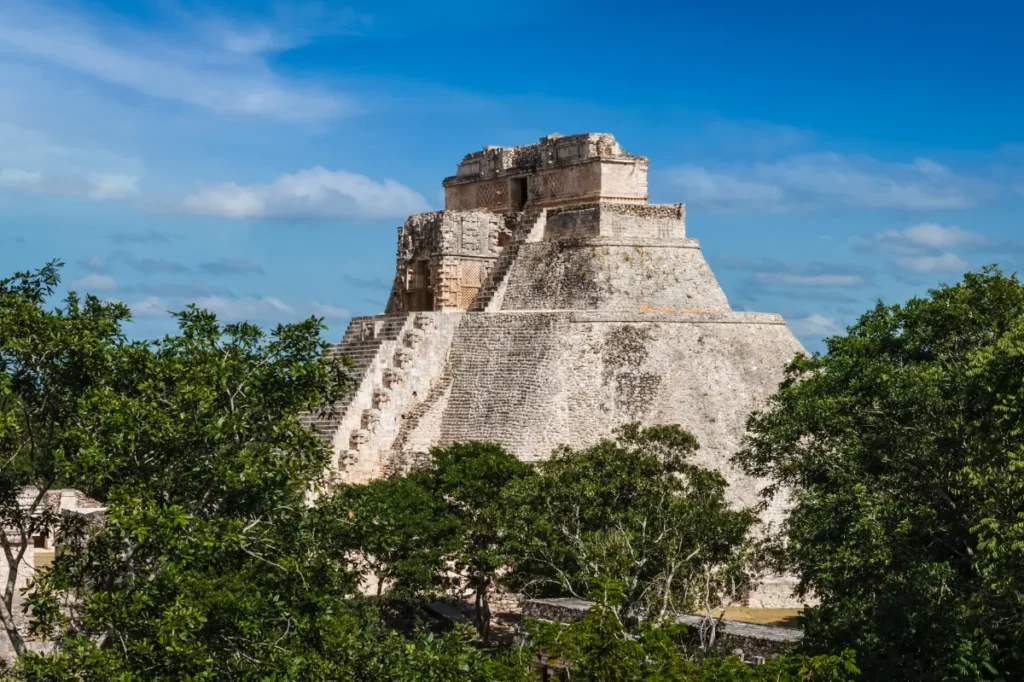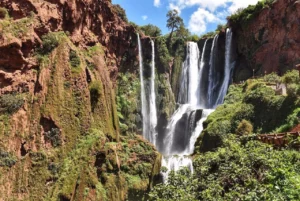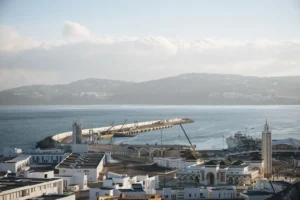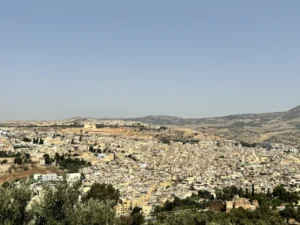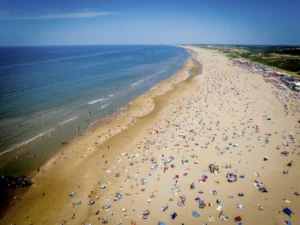Uxmal is one of the most important Maya cities in Mexico, located in Yucatan. It is renowned for its impressive architecture and cultural richness. Since 1996, it has been declared a UNESCO World Heritage Site. The city was founded in the 7th century and reached its peak in the classic period. Uxmal stands out for its Puuc architectural style and presents a mixture of cultural influences that reflect the history of the Maya civilization.


Uxmal: Mayan Cultural Heritage
Considered one of the jewels of Maya civilization, the city of Uxmal is an outstanding example of the architectural ingenuity and cultural richness of this ancient society. Its history, associations and legacy reflect centuries of tradition and sophistication.History and Foundation of Uxmal
Uxmal's origins date back to the 7th century, during the classic period of Maya civilization. Founded in a region that favored agriculture and water harvesting, this city became an important center for the social, political and religious practices of the area.Cultural Influences at Uxmal
Throughout its development, Uxmal received influences from various Mesoamerican cultures. The arrival of groups such as the Mexicans and Toltecs brought with them new architectural styles and cultural practices. This mixture enriched Uxmal's identity, creating a diversity that is evident in its rituality and construction.The Chilam Balam of Chumayel
One of the most significant documents referring to Uxmal is the Chilam Balam of Chumayel. This text, written in the Maya language, contains historical, mythological and everyday life accounts, providing valuable insight into what society was like in this ancient city. The stories also reflect the Mayan worldview and understanding of time and cycles, closely linked to their environment and agricultural practices.Uxmal and its Decline
Uxmal's splendor, however, did not last forever. The city faced multiple challenges that led to its eventual abandonment, marking a significant change in its history.Abandonment Factors
Several theories have been proposed about the reasons for the decline of Uxmal. Among them are the social revolt that resulted in the fall of the ruling elite. Likewise, environmental deterioration, possibly caused by the overexploitation of natural resources, may have contributed to the difficulty of sustaining a growing population. These factors, among others, led to the depopulation of Uxmal and the loss of its regional relevance.Rediscovery in the 16th century
After its abandonment, Uxmal remained forgotten for centuries, until interest in its history began to resurface. In the 16th century, Fray Diego de Landa arrived in the region, documenting his observations of the Maya ruins. These early chronicles and investigations were crucial to the recognition of the site's importance, marking the beginning of more formalized research that would flourish in later centuries.Architecture of Uxmal
Uxmal's architecture is a testament to the ingenuity and creativity of the Maya civilization. Characterized by its Puuc style, this city presents buildings that are not only functional, but also aesthetically impressive. Uxmal's architectural features reflect its cultural and social relevance in pre-Hispanic times.Puuc Style and its Characterization
The Puuc style stands out for its mixture of simplicity and ornamental complexity. It is characterized by low, well carved walls, which contrast with the elaborate decorations of its friezes. This style is deeply associated with the Puuc region, where Uxmal stands as an outstanding example.Mosaics and Ornate Friezes
The mosaics at Uxmal are an element of great artistic importance. These decorations are elaborated with stones of different colors and intricate designs that represent diverse mythical figures and elements of nature. The ornate friezes, which often adorn the facades of buildings, incorporate symbols that relate the Maya cosmovision, showing the connection between the divine and the earthly.Representations of the God Chaac
A recurring theme in Uxmal's architecture is the representation of the god Chaac, deity of rain and lightning. Images of Chaac, frequently sculpted on buildings, reflect the importance of rain for agriculture. These representations often include large noses and elements symbolizing lightning, integrating religion with architecture.Landmark Buildings
Uxmal is home to a series of constructions that are considered icons of Maya culture. Each of these structures has its own meaning and purpose, demonstrating the meticulous planning and design that characterized the Maya.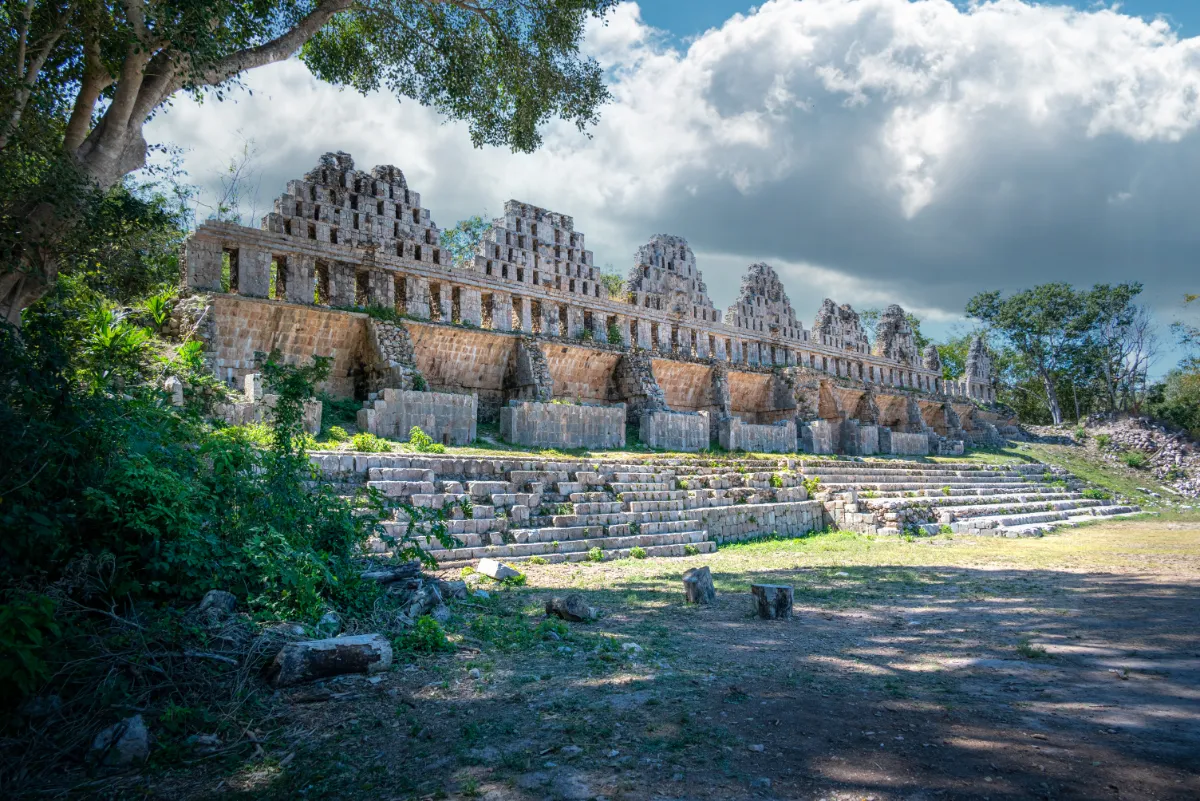
The Soothsayer's Pyramid
Also known as the House of the Soothsayer, this pyramid is one of the most representative monuments of Uxmal. Its oval shape and five levels of construction are impressive. According to legend, it was built in a single night by a dwarf, which adds a mystical aura to its history. The orientation of its stairway towards the east denotes the deep Maya knowledge of solar cycles.The Governor's Palace
The Governor's Palace is another outstanding example of Uxmal's architectural splendor. This building stands out for its length of almost 100 meters and its exquisite stone decoration. The reliefs that adorn its walls are a vivid representation of the Maya cosmovision and its interrelation with politics and power. This building not only functioned as a residence, but also as a center of power and rituals.The Nuns' Quadrangle
This space is a central plaza surrounded by four architecturally homogeneous buildings. Its design is a clear reflection of Maya urban planning. The ornamental elements on the sides of the buildings show a rich decorative variety, symbolizing the social and cultural connection between its inhabitants.The Great Pyramid
Although less well known than the Pyramid of the Soothsayer, the Great Pyramid is also a significant construction within the archaeological zone. This structure reflects the mastery of construction and understanding of geometry by the Maya. Its staircase and alignment with the other buildings show a design that considers not only aesthetics, but also astrological aspects.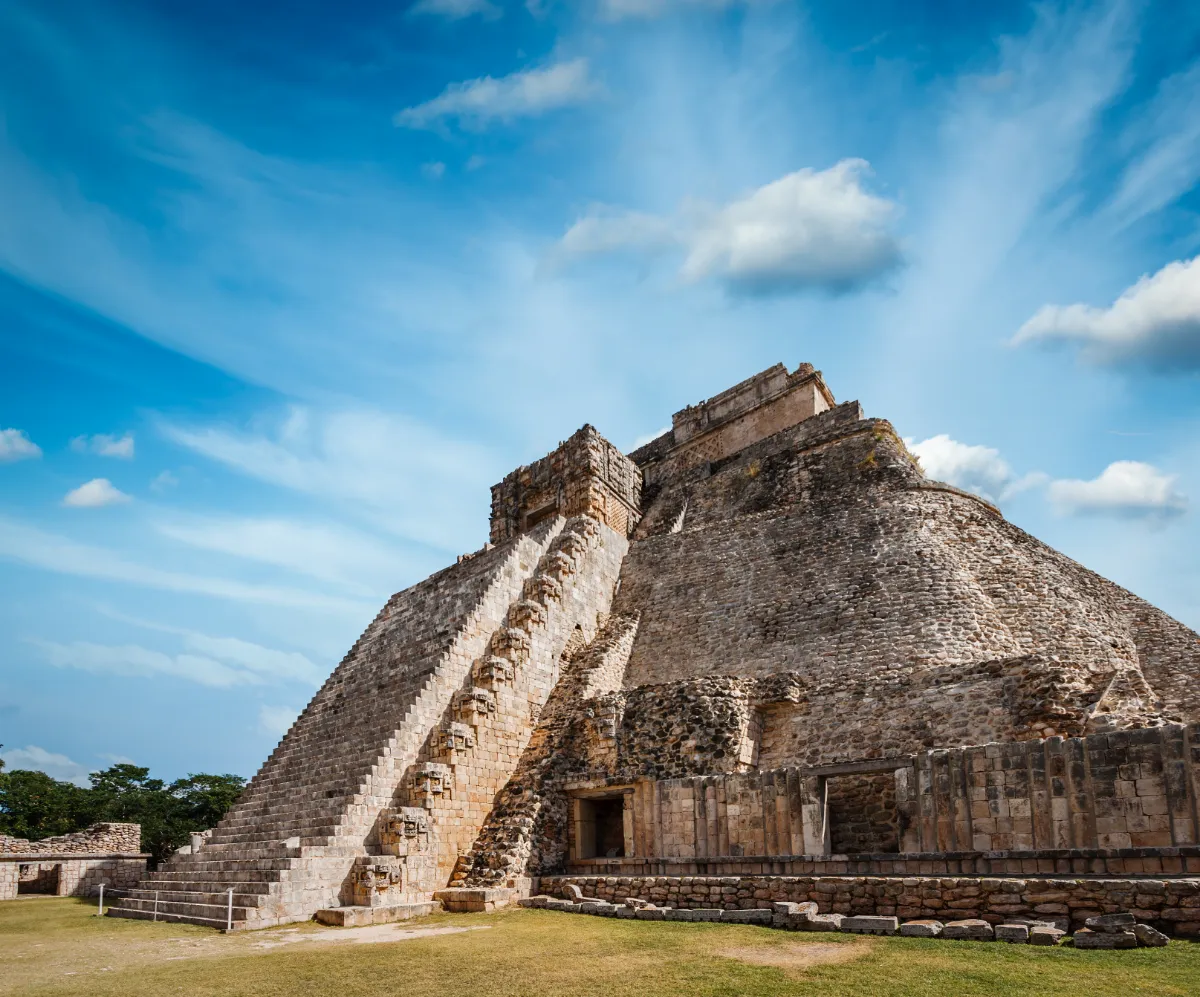
Location and Access to Uxmal
The archaeological site of Uxmal is located in a natural setting that complements its cultural grandeur. Access to this site is easy, allowing visitors to explore its rich history and architecture in a comfortable way.Site Map and Puuc Zone
Uxmal is located in the region known as the Puuc Zone, an area known for its unique architectural style and biodiversity. This geographical location is fundamental to understand the historical and cultural importance of Uxmal within the Maya world.Geography of the Region
The geography of the Uxmal region is characterized by a varied landscape that includes hills, valleys and rich vegetation. This diversity has been crucial for the development of agriculture in the area, as well as for the construction of the impressive buildings that can be seen today.Landscapes and Biodiversity
The flora and fauna of the region also contribute to the biodiversity of the area. Visitors can find a wide variety of plant and animal species, which highlights the ecological importance of Uxmal and its surroundings. The conservation of this natural environment is vital to maintain the ecological balance and scenic beauty of the site.Transportation Options from Merida
Access to Uxmal is simple and varied, which facilitates the arrival of visitors from different places, especially from Merida, the capital of the state of Yucatan. There are multiple options to reach this archaeological site.Road Accessibility
The road that connects Mérida with Uxmal is in excellent condition, allowing for a fast and safe trip. This trip typically takes about an hour and is well signposted along the way, making it easy to identify routes and destinations. Motorists can enjoy a scenic drive as they make their way to the historic site.Tours and Guided Services
For those who prefer a more structured experience, several tour options and guided services are offered. These alternatives include:- Bus transportation from Merida with scheduled tours.
- Tour guides who provide detailed information about the history and architecture of Uxmal.
- Combined visits to other nearby archaeological sites.
👉 Learn more about how we can help you in your travels and tours by clicking here 👈

